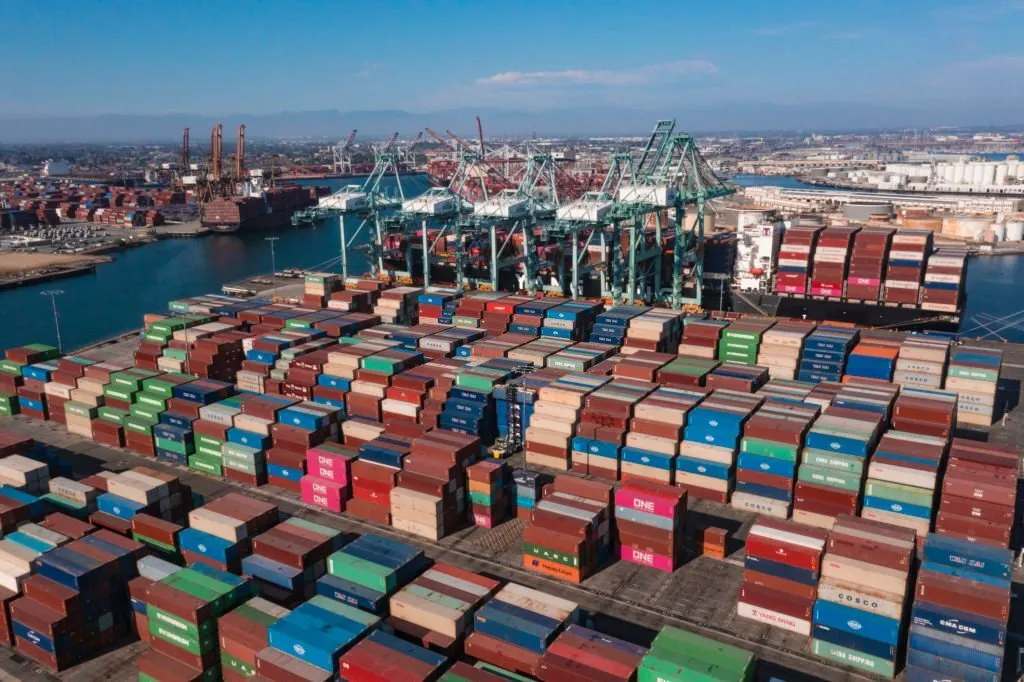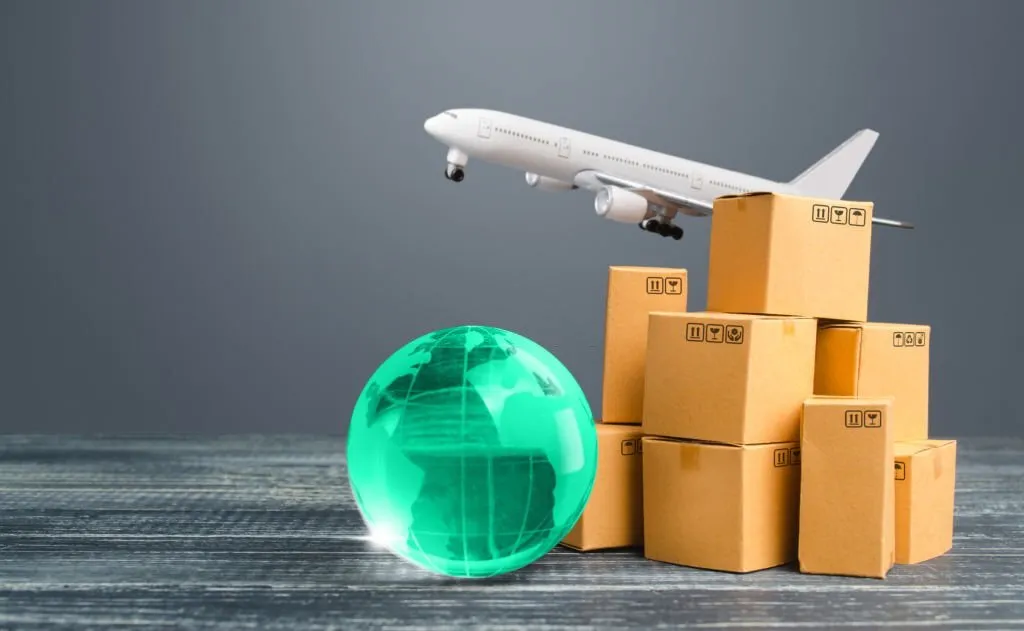Table of Contents
Enhance global trade prowess with expert insights on International Shipment Release – Import strategies. Elevate your business now!
Importing shipments internationally can be a complex process with customs clearance, duties, taxes, and various regulations to follow. Here is an overview of the International Shipment Release – Import process.
What is International Shipment Release – Import?
International shipment release refers to the process of clearing an import shipment through customs and releasing it so the shipment can proceed to its final destination. This involves filing paperwork, paying any applicable duties or taxes, and getting the shipment cleared and released from the custody of customs officials.
Some key steps in International Shipment Release – Import include:
- Arrival and unloading of the shipment at the destination port.
- Filing of paperwork – Importers must file documents like commercial invoices, packing lists, and any other required information with customs officials.
- Customs clearance – Customs officers will inspect the shipment, verify the paperwork, and determine if any duties or taxes need to be paid.
- Payment of duties & taxes – if applicable, these must be paid before customs will release the goods.
- Release of shipment from customs – Once all regulations are satisfied, customs will issue a release allowing the shipment to leave the port and proceed to delivery.
Having the proper customs brokers and freight forwarders to handle these steps is important for smooth International Shipment Release – import.
Why International Shipment Release – Import is Important
Getting shipments cleared and released from customs in a timely manner is critical for several reasons:
- Avoid port storage fees – shipments incur daily storage fees if stuck at ports waiting for customs clearance.
- Prevent shipment delays – Broker delays can postpone delivery by days or even weeks.
- Cash flow – importers want to get goods released quickly so they can fulfill orders and get paid. Slow release ties up cash flow.
- Inventory management – Delayed release makes it hard for importers to plan and manage inventory properly.
- Customer service – Importers want happy customers and on-time delivery. Customs delays disappoint customers.
Proper customs paperwork, diligent brokers, and compliance with regulations help facilitate rapid release.
Customs Entry Process Step-by-Step
Here is an overview of the typical international shipment customs entry and release process:
1. Shipment Arrival at Port of Entry
The imported goods arrive at the destination port or airport on trucks, airplanes, or ships. The shipper notifies the importer of the arrival date and details.
2. Customs Entry Filed
The customs broker files entry paperwork and documentation electronically in the customs system on the importer’s behalf. This provides information such as – a description of goods, commercial invoices, total value, and freight costs.
3. Shipment Inspection
Customs officials will screen documents for accuracy, review the importer’s history, and potentially physically inspect the shipment. They assess duties & taxes owed and ensure regulatory compliance.

4. Payment of Estimated Duties & Taxes
The importer must pay estimated customs duties and taxes upfront before the release of the goods. The customs broker usually pays this on the importer’s behalf.
5. Shipment Release
Once customs verify all requirements are met, they issue a release allowing the shipment to proceed from the port to the importer’s location.
6. Delivery to Importer
The customs broker oversees the delivery of the released shipment to the importer using trucking, rail, or air transportation. Great post to read about freight market update 2023.
7. Payment of Additional Duties if Any
If the estimated duties paid were lower than the actual amount due after customs final assessment, the importer must pay these additional duties later.
Proper execution of each step is key for smooth sailing through customs and avoiding shipment delays.
Common Delays in International Shipment Release – Import
While customs aims to release shipments rapidly, some common factors can delay the release process:
- Incomplete or inaccurate paperwork – Errors or omissions on customs forms, commercial invoices, and other documents required for customs entry.
- Compliance issues – If customs finds prohibited items, undervaluation, false descriptions, or other compliance problems. Resolving these takes time.
- Sudden new regulations – When countries abruptly change import regulations consignments get stuck until requirements are met.
- Port congestion – When ports or airports get extremely busy with shipments congestion can slow customs processes.
- Technology outages – Customs and other port systems going offline can bring processes to a halt.
- Unforeseen events – Weather, labor strikes, or other unpredictable events can unexpectedly stall customs release.
Proactive customs planning, compliance, and adapting to changing trade regulations help reduce delays.
Costs Related to Customs Release
What are some of the costs associated with getting shipments cleared and released by customs?
- Duties – Most countries charge import duties on foreign goods coming into the country. Duty rates vary based on the type of items.
- Taxes – Imported goods are also subject to taxes like VAT, GST, or sales taxes which must be paid before release.
- Customs broker fees – Brokers charge fees for facilitating customs entries and navigating the bureaucracy.
- Storage fees – Imports incur daily storage fees at ports if release gets delayed by customs.
- Demurrage fees – Charges applied when shipments remain in shipping containers past the allotted free time.
- Fines/penalties – Payable if customs finds any compliance violations or errors.
Properly classifying goods, valuing imports accurately, and avoiding penalties help lower customs release costs.
How Long is Customs Release Taking?
How long it takes from an international shipment’s arrival to its release from customs can vary significantly. Factors impacting customs release time include:
- Entry type – Simpler informal entries can clear faster than formal entries.
- Regulatory agencies – If multiple agencies like the FDA or EPA review goods, it adds time.
- Inspection – Physically inspected cargo takes longer versus scans/document review only.
- Port volume – Release times are slower at congested mega ports versus smaller ports.
- Compliance – Smooth-compliant entries clear faster than problematic ones.
- Valuation – Complex dutiable value calculations delay release.
- Country – Each customs authority works at its own pace. Some are very efficient, others quite slow.
- Shipment type – Air cargo typically clears customs faster than ocean freight.
While customs aims to release shipments within 48 hours of arrival, added compliance complexity can stretch the process to multiple days or even weeks.
Best Practices for Fast Customs Release
Here are some recommendations for expediting international shipment customs release:
- Provide complete, accurate paperwork to customs – reduces delays from unknowns or errors.
- Classify goods properly under the correct HS codes so duties are assessed correctly.
- Utilize an experienced customs broker – they smooth and expedite the process.
- Carefully follow all customs regulations and import laws to avoid penalties.
- If inspected, have staff available to assist customs officers and answer questions.
- For time-sensitive goods, consider air freight over slower ocean shipments.
- Discuss special release needs with customs pre-arrival for urgent shipments.
- Take advantage of trusted trader programs like C-TPAT that provide faster release.
- Use customs bonds as a guarantee of payment for quicker release.
Proper planning and procedures allow shipments to clear customs seamlessly so importers can receive their goods rapidly.
Is my Shipment Stuck in Customs? How to Check Status
If an international shipment seems delayed longer than expected after arriving, it may be stuck in customs. How can an importer check on the status?
- Contact the customs broker – They have direct visibility into the customs entry status through the broker software.
- Check customs website – Some customs authorities provide online tools to check entry status by the entry # or importer account.
- Call customs – Most ports have a customer service number importers can call to inquire about entry status.
- Ask the shipping line – Ocean carriers can also look up the arrival/departure status of containers.
- Check tracking tools – Carrier or third-party track and trace tools provide updated milestone events.
- Visit the port – As a last resort, visiting the port terminal in person can help identify any hold-ups.
- Submit missing paperwork – If customs require any further documents or clarifications submit them ASAP to get the shipment moving.
If engaging multiple parties, it helps to keep a shared release status tracker so all teams have visibility and are aligned on the next steps.

Avoiding Customs Delays on Future Shipments
If a shipment faces extended customs delays, examine the causes and identify process improvements for future shipments:
- Improve importer compliance – Review denied entries and ensure full compliance.
- Enhance broker expertise – Work with seasoned brokers focused on the importer’s industry and requirements.
- Allow clearance time – Build extra buffer time into delivery schedules recognizing realistic customs release timeframes.
- Provide entry visibility – Have the broker provide visibility to status updates throughout the customs entry process.
- Centralize customs data – Maintain organized databases of entry documents needed to expedite entries.
- Analyze release patterns – Identify any shipment characteristics linked to faster/slower releases.
- Discuss delays – Openly communicating with customs representatives to understand the root causes of delays.
- Consider bonuses – Offering brokers small bonuses for clearing urgent shipments can incentivize focus.
- Explore other ports – If one port has chronic delays, evaluate feasible alternatives.
Avoiding the “black hole” of endless customs delays requires vigilance, adaptability, and constant reevaluation of import processes.
Who Can Help with Customs Release?
Navigating the international shipment customs clearance and release process often involves working with experts including:
Licensed Customs Brokers – Brokers are specialists in customs compliance that help manage declarations, duties, taxes, and interactions with customs on the importer’s behalf. They have the knowledge and customs connections to streamline release. Relying on an unqualified broker can actually delay clearance.
Freight Forwarders – Freight forwarders arrange international shipping and can optionally take on customs brokerage responsibilities. Choosing between standalone brokers vs. forwarders offering customs services comes down to competence and specialization.
Customs Attorneys – If facing penalties, seizures, or other legal issues an importer may engage a customs attorney to help resolve disputes with regulatory authorities.
CBP and Trade Attorneys – Private attorneys well-versed in CBP regulations and processes can advise importers on customs compliance optimization and advocacy.
Third-Party Logistics (3PLs) – Logistics providers sometimes assist with customs brokerage as an additional service on top of contract warehousing and freight management.
For best results, partner with licensed specialists focused solely on customs brokerage in the importer’s industry. Their expertise provides the greatest advantage in accelerating release.
International Shipment Release – Import Checklist
To maximize the efficiency of the International Shipment Release – Import customs release and delivery process, here is a helpful checklist:
- 🗹 Classify goods with correct HS codes for each product
- 🗹 Gather all required customs entry paperwork – invoices, COO, shipping manifests, etc.
- 🗹 Confirm importer of record number and account setup
- 🗹 Calculate total shipment value, freight + insurance costs accurately
- 🗹 Screen all goods for import/export restrictions
- 🗹 Pay estimated duties and fees upfront to avoid delays
- 🗹 Confirm cargo insurance remains valid through the release process
- 🗹 Designate a licensed customs broker for declarations and process management
- 🗹 Provide broker power of attorney to act on the importer’s behalf
- 🗹 Share relevant importer and shipment details with a broker in advance
- 🗹 Confirm delivery timing needs – identify any urgent shipments
- 🗹 Provide a point of contact who can answer customs questions
- 🗹 Arrange inspection-ready staging area and staff if physical inspection
- 🗹 Track status updates from a broker at each stage of customs entry
- 🗹 Plan for logistics handoff to the inland carrier once released
Following this checklist helps shipments clear customs seamlessly and continue on to delivery. Careful preparation creates a smooth international shipment release and import experience.
Final Thought
Receiving inventory from overseas is vital for many businesses, but importers can face costly delays if shipments get stuck in lengthy customs release processes. By partnering with competent customs brokers, providing complete and accurate entry paperwork, understanding customs requirements, allowing realistic lead times, and continually optimizing their import processes, businesses can maximize their success in getting goods swiftly released and delivered into commerce. Handled right, International Shipment Release – Import through customs checkpoints can be a competitive advantage rather than a liability.




